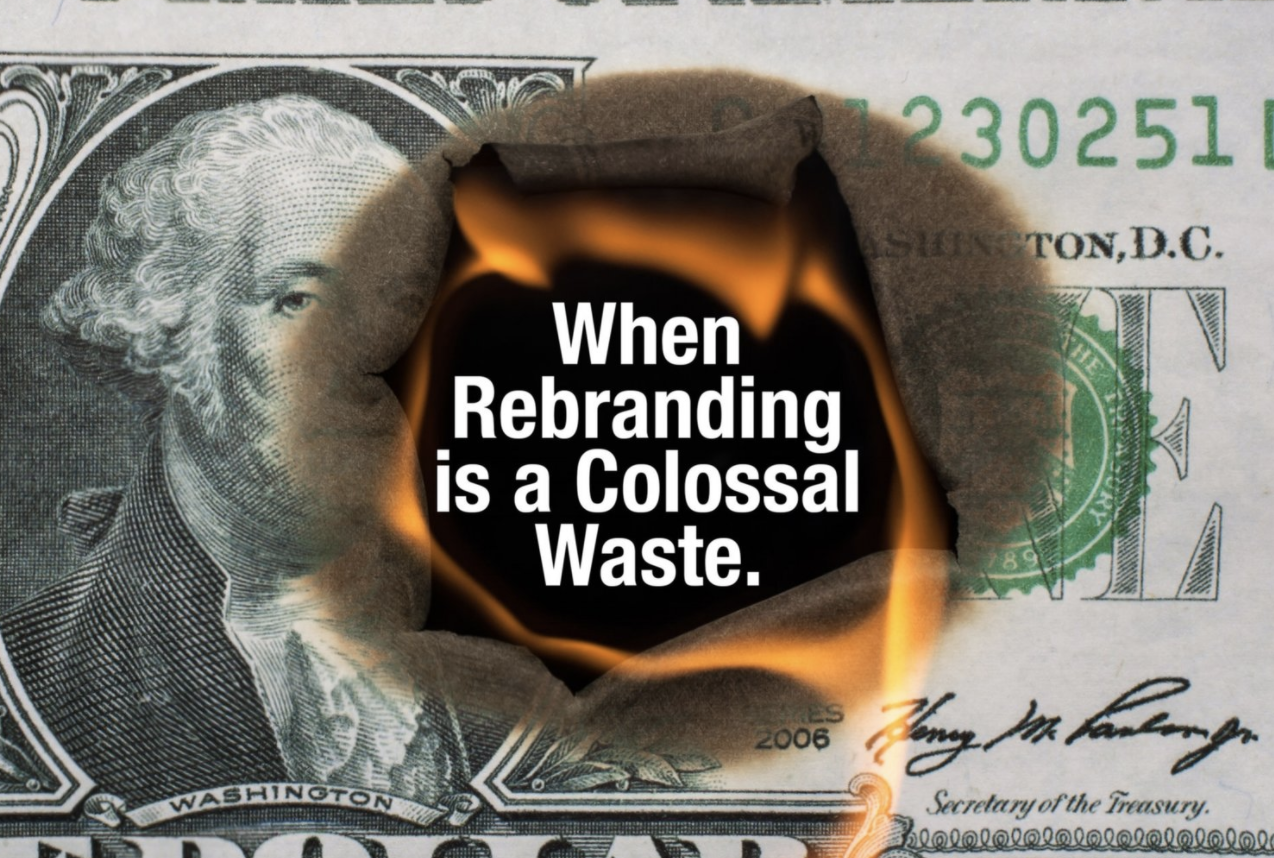When Rebranding is a Colossal Waste
Rebranding; for many of us, just the thought of it evokes a host of negative emotions and trepidations. For others, it’s simply a part of a brand’s lifecycle. No matter where you stand on the topic, it’s critical to take a long hard look in the mirror before making any major rebranding decisions. Before investing valuable time and resources, take the time to identify the issues your organization is facing and determine if it’s really the brand that needs the makeover.
When is Rebranding Not Worth the Effort?
One particular example that comes to mind is when a long-standing, and very successful, client at Off Madison Ave made the decision to cut ties and rebrand with another agency. After many successful years, they felt a fresh approach was needed in order to expand their audience. From a business perspective, this may seem like a great goal, but for a brand that does not understand Behavior Design, things can quickly take a nosedive. To understand how to avoid such a pitfall, it’s important to first understand the theory behind Behavior Design.
Behavior Design Model courtesy of Dr. BJ Fogg
Fogg Behavior Model
I recently completed my certification in Behavior Design with Dr. BJ Fogg of the Persuasive Technology Lab at Stanford University. Dr. Fogg’s Behavioral Design theory is a series of models and methods designed to help facilitate behavior change. His approach is best defined by his Behavior Model. When working to facilitate behavior change, he asks us to consider the relationship between one’s level of motivation and their ability to achieve a desired change. The y-axis represents motivation and the x-axis represents ability. Only when there is sufficient motivation and sufficient ability, that crosses the action line, will a behavior change take place when triggered.
To understand how a rebranding effort can take a wrong turn, one needs to understand the 4 basic types of audiences within the behavior model.
Those in the upper right quadrant are highly motivated with a high degree of ability, they merely need to be triggered in the right way. Those in the upper left quadrant are highly motivated, however they lack the ability to complete the behavior when triggered.
When considering those in the lower right quadrant, this audience has a lot of ability to perform an action but absolutely zero motivation. Those in the lower left quadrant, are not motivated nor do they have the ability to perform a desired behavior. Simply put, you can trigger those below the action line all day long but ain’t nothing gonna happen!
We can improve on our ability to facilitate a behavior change by first making certain our triggers are being received. An example of this would be if your audience is completing research online about your products or services but you are focusing on TV. If your triggers are not being received, you will never effectively facilitate a behavior change. This is why it’s so important to deliver your message to a receptive audience. If for instance, your audience is highly motivated to use your product but they feel it’s too expense, one way to move them across the action line is to give them an incentive such as financing or a coupon.
Take me for example; I love to cook, I often do so for my friends and family. However, you will never trigger me to enroll in culinary school. If a culinary institute assumed that I fell into their target audience because I love to cook, they would be wasting their time and resources. In other words, a brand should only go after an audience with a sufficient amount of motivation. They should make certain they can move their audience’s ability, to use their product or service, above the action line. In short, help people do what they already want to do.
When Rebranding Takes a Turn for the Worse
Now that we have explored the Fogg Behavioral Model, I’ll get to my point; when rebranding is a mistake. Over several years, we helped our aforementioned client establish themselves as a market leader. We focused completely on audiences who had a sufficient amount of motivation to use their service and we crushed it. As a result of their new-found success, they brought in a new CMO to help continue the momentum. The new leadership made the strategic decision to expand the brand’s reach in order to attract to new audiences and increase revenue.
The problem with their new approach was that they attempted to go after individuals who had a lot of ability but little motivation. In behavioral science it’s impossible to design behaviors to motivate people to take a desired action. Motivation comes in waves, trying to time a trigger to hit at the highest point of a motivation wave is a crap shoot at best.
Within 6 months of execution, revenue was a couple million dollars in the hole, clearly indicating that the rebrand was tanking. To right the ship, they reengaged with us. We looked at all of their communication efforts and returned to a behavioral model focused solely on those audiences with enough motivation to use their product, regardless of ability. By increasing the target audiences’ abilities to take an action, and executing the triggers within the right channels, we were able to drastically increase qualified leads and improve their sales department’s close ratio. 90 days later, they had the best sales month in the company’s history and today they are closing in on their best quarter to date.
So, how do you know when you have taken the wrong approach with rebranding? When it causes you to lose sight of the audiences who are already motivated to use your product or service. In other words, don’t try to be everything to everyone. Instead, focus your time and attention on those who have a desire to realize the outcome your product or service delivers.



